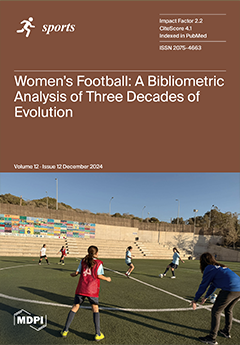Frequent changes in altitude and oxygen levels limit the practical application of traditionally derived exercise thresholds or training zones based on heart rate (HR) or blood lactate concentration (bLa). We investigated the transferability of a muscle oxygenation (SmO
2)-based intensity prescription between different hypoxic conditions to assess the suitability of real-time SmO
2 measurements for ski-mountaineering (SKIMO) athletes during submaximal endurance exercise. A group of 15 well-trained male SKIMO athletes performed a graded-intensity run test in normoxia (87 m ASL, FiO
2 = 20.8%) to determine the anaerobic threshold (AnT) with the mod-Dmax method, and maximal lactate steady state (MLSS) assessments in acute normobaric hypoxia (3000 m ASL, FiO
2 = 14.4%) with the intensity aligned to 90–105% of SmO
2 at the normoxia-determined AnT. SmO
2, HR, and bLa were monitored during both tests. The number of MLSS assessments without a bLa increase over 1 mmol·L
−1 was reported. Paired
t-tests with Cohen’s d effect sizes and intraclass correlation coefficient (ICC) were computed to compare the bLa and HR at the AnT in normoxia and MLSS averages in hypoxia, as both corresponded to equivalent SmO
2. Out of the 15 MLSS assessments, 11 (73.3%) were performed without a bLa increase over 1 mmol·L
−1. Significant differences at equivalent SmO
2 in normoxia and hypoxia were found for HR (175 ± 11.7 vs. 160 ± 14.2 bpm,
p = 0.005, d = 1.02), but not for bLa (4.9 ± 1.2 vs. 5.1 ± 2.4 mmol·L
−1,
p = 0.845, d = −0.05). ICC(2,k) for HR and bLa were 0.56 (95% CI: −0.24, 0.85) and 0.40 (95% CI: −0.75, 0.80), respectively. The results indicate a fair transferability of a SmO
2-based intensity prescription between different hypoxic conditions in well-trained SKIMO athletes during submaximal endurance exercise. The practical significance of the observations depends on the required accuracy of the exercise intensity determination.
Full article






